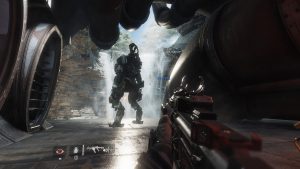 Yes, it has been too long since I last posted, but I have a perfectly valid reason for that: much of my free time has been spent playing, and finishing, games. At the beginning of the year, I committed myself to playing through a short game every weekend and, for the most part, I’ve stuck to this plan. There was one rather bad game I couldn’t bring myself to power through (the brutal puzzle adventure htoL#NiQ: The Firefly Diary), but the rest of these short games have been decent to great.
Yes, it has been too long since I last posted, but I have a perfectly valid reason for that: much of my free time has been spent playing, and finishing, games. At the beginning of the year, I committed myself to playing through a short game every weekend and, for the most part, I’ve stuck to this plan. There was one rather bad game I couldn’t bring myself to power through (the brutal puzzle adventure htoL#NiQ: The Firefly Diary), but the rest of these short games have been decent to great.
Tag: jrpg – general
I don’t replay games as often as I used to, in part because my backlog of fresh, new-to-me titles has grown so large. The last time I did was in August 2020, when I played through the version of Pinky:st Kira Kira * Music Hour released in Europe, titled Kira Kira Pop Princess. Still, ports and reissues of games I’ve played before enter my collection from time to time, causing me to file mental notes to someday replay the likes of Phantom Brave, Halo: Reach, and Final Fantasy IX.
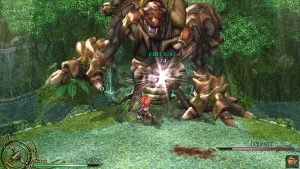
As for the game itself, it turned out that my thirteen year-old review was still largely on-point, though I found myself having less patience for the amount of backtracking and grinding I had to do, to say nothing of the ridiculousness of the dash jump controls. The dash jump is a special move that can be used to traverse distances that are a bit too far for a regular jump. To pull one off requires doing a dash attack, which is not an easy thing to do in the first place, while jumping. Given that this was a replay where I didn’t feel like going for any sort of total completion, I gave up trying to reach certain treasure chests after awhile. I still went around and took on the optional bosses, though, which resulted in gear that helped me out a good deal in the endgame.
In comparison with Memories of Celceta, the Ys game I had played prior to this one, it’s evident that the series has come a long way. Celceta isn’t as grindy, sports better map and dungeon designs, and had a bit more variety in general. It’s also about 33% longer than Ys VI, yet with less of a reliance on backtracking and grinding, doesn’t feel as padded out. However, both games share that exhilarating fast-paced sword-swinging gameplay that is a hallmark of the Ys series. Despite their differences, some of which are rather significant, both games fit comfortably within the Ys canon.
There is at least one other replay I want to do this year, the aforementioned Phantom Brave. On my first playthrough of that isometric strategy RPG, I came away loving everything but the gameplay, which is done in a “tile free” style that I found to be fussy more than anything else. As I (successfully) did with Final Fantasy VIII many years ago, I want to give Phantom Brave another chance; the main question is when. As for Ys, I have all three of the latest numbered entries to play next, starting with Ys Seven. Hopefully I can get through both that and Ys VIII: Lacrimosa of Dana before the end of the year. I won’t be done with Adol Christin for awhile yet.
The Mystery Dungeon clone 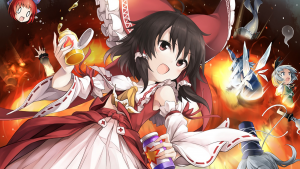 Touhou Genso Wanderer Reloaded was one of those games I picked up on the strength of my experience with it at a PAX, specifically at the sparsely-populated UNTIES booth in 2018. This was a year before I played Touhou Eiyashou: Imperishable Night, which was my proper introduction to the Touhou series. Later on, I would play through its predecessor, Touhou Youyoumu: Perfect Cherry Blossom, before starting the Switch port of Genso Wanderer, my first Touhou spinoff, more than a year later.
Touhou Genso Wanderer Reloaded was one of those games I picked up on the strength of my experience with it at a PAX, specifically at the sparsely-populated UNTIES booth in 2018. This was a year before I played Touhou Eiyashou: Imperishable Night, which was my proper introduction to the Touhou series. Later on, I would play through its predecessor, Touhou Youyoumu: Perfect Cherry Blossom, before starting the Switch port of Genso Wanderer, my first Touhou spinoff, more than a year later.
As it turns out, Genso Wanderer would lead me to starting a third mainline Touhou game, and the last one I had in my backlog: Touhou Fuujinroku: Mountain of Faith. This was because there are several prominent characters in Genso Wanderer who were first introduced in Mountain of Faith, the tenth entry in the core series of magical shmups. Two of these characters, Aya and Sanae, star in their own post-game sidestories in Genso Wanderer; another one, the kappa Nitori, plays a key role tied to the crafting system; and the rest of the cast make notable appearances at various points. While there are a bevy of characters from all over the Touhou canon featured throughout, I got the impression that Genso Wanderer‘s developers must’ve loved Mountain of Faith in particular.
Until this past Sunday, when the credits rolled on Ys: Memories of Celceta, I hadn’t beaten an Ys game since 2013. Even though I love the series, they had been starting to pile up, but so many other games got in the way. A reimagining of Ys IV, Celceta is a fairly standard entry, which is by no means a bad thing. There are a handful of party members to manage, which isn’t typical of many Ys games, along with a sprawling forested overworld, decently-sized dungeons, sidequests, crafting, and more. Weapon reinforcement felt extraneous, especially given the pace at which new gear would be introduced, and a certain dungeon sported some annoying design quirks, but otherwise, this was another engaging adventure with heartthrob explorer Adol Christin. Most importantly, I was able to get through the main story and most of the side stuff in thirty and a half hours. This is two and a half hours more than the average Main+Extra time on HowLongToBeat. I tend to go over these averages by about 10%, so my own beat time was about the length I had expected.
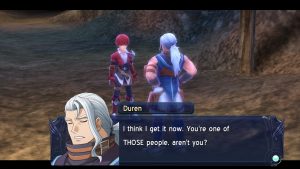
As much as I enjoy these series, I do wish that their individual installments were shorter on average, particularly given the size of my backlog. Ys’ stories never feel rushed, have appropriate amounts of tone-setting flavor baked in, and don’t overstay their welcome. Sure, some JRPGs, like the aforementioned Dragon Quest VII, feel bloated in terms of storytelling and lore, but even those with tighter pacing often end up being long. How is it that Ys can pull off a similar experience with less gameplay time?
For starters, Ys-style combat and movement feels snappier than those in other action RPGs, such as the Tales and Kingdom Hearts series. This isn’t unique to action RPGs, either; the turn-based Bravely Default features quick, breezy battles. Ys games also tend to have no more towns than you can count on one hand, which cuts down on NPC chatter. Compare this to Dragon Quest VII, which not only has a ton of towns, but most of these locales change in significant ways depending on the time period you visit them in. There’s also the matter of grinding, which, to be honest, is a non-issue with the main storylines of most JRPGs, but does rear its ugly head every once in awhile. In short, to get a JRPG down to Ys length, a good balance between brevity and design seems to be ideal.
When I looked at some more of last year’s big JRPG releases on HowLongToBeat, it was heartening to see that Monstrum Nox wasn’t alone in terms of reasonable length. Final Fantasy VII Remake‘s Main+Extras time is 42 hours and Disgaea 6‘s is, remarkably, 46.5. Even Tales of Arise has a Main+Extras time that is less than 60 hours, which seems remarkable for a Tales game. Perhaps JRPG developers are finally moving away from the idea, prevalent since at least the PS2 era, that longer equals better. Perhaps they are remembering that the best JRPGs don’t have to be the longest.
I certainly hope so. There are a number of potentially very long JRPGs still sitting in my backlog, some of which are so intimidating in terms of length that I keep putting them off. On the other hand, there’s also more Ys games. The plan is to get through most, if not all, of those Yses by the end of this year, interspersing them with other JRPGs of a reasonable length. As for the longer ones, I’ll continue to chip away at that pile whenever the mood strikes me.
Sure, I didn’t finish many games in 2021, though this year should be different. My backlog is, as usual, jam-packed, and end-of-year sales and gifts added quite a bit to it these past few months. My backlog is so large now that I have mini backlogs for individual series, never mind platforms. I’ve managed to whittle down the unplayed MegaTens to three (six if Persona spinoffs are included), and Dragon Quest games are at four now that I’ve slogged through Dragon Quest VII on 3DS. Disgaea is also at four, including a remake of the first game, which is one of my favorite RPGs of all time, and a co-op centric replay of most of the Halo series, this time via The Master Chief Collection, is in the cards.
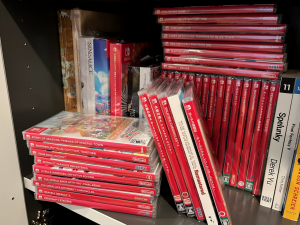
The other JRPG, stared a couple of days before Celceta, is Touhou Gensou Wanderer Reloaded, a Mystery Dungeon clone set in the Touhou world of Gensokyo. It’s a solid rougelike with some nice tweaks to the formula, such as the ability to keep all of your items, including enhanced weapons, after being wiped out in a dungeon. This makes future runs a bit less painful, provided you don’t lose (or accidentally sell) your best gear. TGWR does assume familiarity with Gensokyo and its residents. (Despite the title, it’s the third in the Touhou Gensou Wanderer series, so it’s possible that some of the past events alluded to are from those previous two games.) I actually started Touhou Fuujinroku: Mountain of Faith, the last mainline Touhou game in my backlog, shortly after starting TGWR because I was curious about certain new-to-me characters. Both games are fun, though Mountain of Faith is harder than I expected, so I don’t know if I’ll ever beat it. As for TGWR, I’ve already finished the main campaign, but haven’t marked it as “beaten” since there’s so much left to do.
I want to start another game soon, preferably something short I can get through in one or two days. There’s a lot of those types of games in my backlog, but I tend to put off the narrative-heavy ones depending on how I’m feeling at the time. Seeing as how I was suffering regular bouts of insomnia for awhile, and still do on occasion, some of these games have gone unplayed for years. For the first one, perhaps I’ll finally finish my run through the Tale of Tales catalog and play Sunset.
Hopefully I can get through many of those shorter games before the year’s out. JRPGs as well; I have a lot of them sitting around unopened, and am aiming to finish at least five of them this year, and ideally, more like twelve. Anyway, that’s the plan. Good luck to everyone else tackling their backlogs in 2022!
For those who might’ve missed it, P.S. Triple Classic wrapped up a little over a week ago, with a fanart farewell post. You can now read the entire official English-language run of P.S. Triple online, along with commentary and some articles related to this comic. I’m still considering my options for the abandonware iOS apps, but I will try and make them available somehow, probably in the near future.
As for what else has been going on, I’ve been hard at work on the next 10th anniversary project, which will hopefully launch soon. I’ve also been playing a bunch of games, so let’s dive into those.